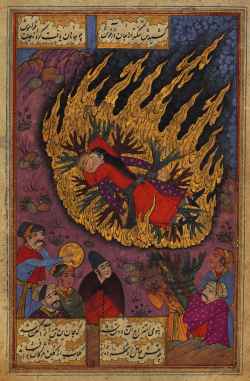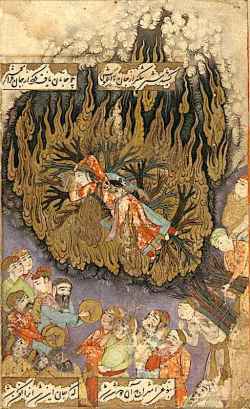Sati: A Nineteenth Century Tale of Women, Violence and Protest
in: At the Edge of Psychology: Essays in Politics and Culture, pp.
Delhi: -, 1980.
Topics:
2. Sacrifice and religion: Comparisons, Antiquarians, Anthropology (16th-18th Century) 3. Sacrifice and politics (16th-18th Century)
2. Sacrifice and religion: Comparisons, Antiquarians, Anthropology (16th-18th Century) 3. Sacrifice and politics (16th-18th Century)
Edited by: Chiara Petrolini
Related Documents:
Satī, from a Sūz u Gudāz manuscript. The union of the couple on the pyre (1657)
from: Sūz u Gudāz ms, Iran, Walters Manuscript W. 649, fol. 19b (Burning and Melting)
The Walters Art Museum, Baltimore, Maryland
Satī. The bride immolates herself on the funeral pyre (1657)
from: Isfahan, Iran
The Israel Museum, Jerusalem
The Fragmentation of Sati: Constructing Hindu identity through nationalistic pilgrimage souvenirs
in: Journal of Decorative and Propaganda Arts, v. 27 (2015), issue --: pp.12-35.
The Role of Missionaries in the abolition of Sati custom in India with special reference to Serampore Missionary
in: Journal Of Humanities And Social Science (IOSR-JHSS), v. 20 (2015), issue 10: pp.52–55.
Scene of a Sati, with a woman throwing herself into the flames amid a crowd playing trumpets. Above, a winged devil holds the banner with the book's title and the torch with which he lights the ritual fire. (1670)
from: Abraham Rogerius, Le Théâtre de l’idolatrie ou la porte ouverte, Amsterdam, Jean Schipper, 1670, title page



